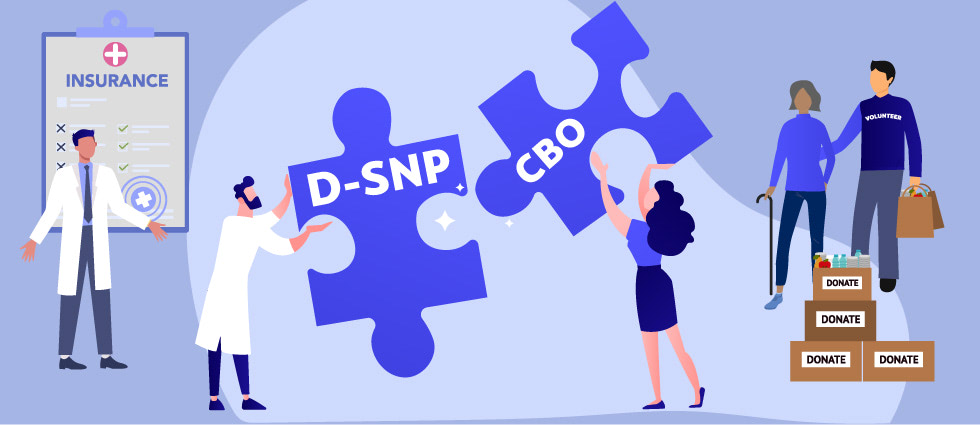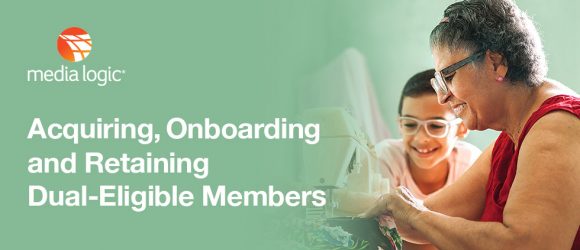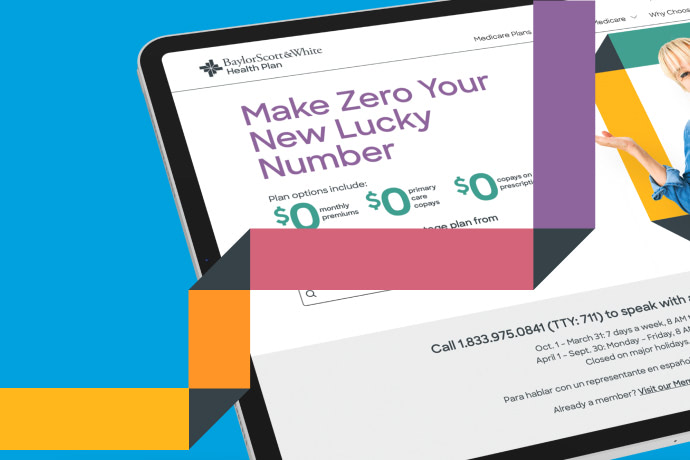Unlocking D-SNP Enrollment and Engagement: The Strategic Role of Community-Based Organizations

In the competitive Medicare market, the Dual Eligible Special Needs Plan (D-SNP) segment is growing faster than general Medicare Advantage (MA) in terms of the number of new plans offered. Though D-SNPs are growing, there are barriers to enrollment and engagement. Less than half (5.8 million) of the approximately 12.8 million eligibles were enrolled in a D-SNP or related plan in 2024.
Awareness of the challenges of enrolling D-SNP members and innovative approaches to overcome these challenges can help plans engage effectively and authentically with the communities they serve.
Challenges of Enrolling D-SNP Members
Lack of awareness
- Some of those who are eligible are not even aware of these plans or have misconceptions about them.
Confusion and complexity
- Individuals may not feel confident taking action because of their confusion about possible automatic enrollment and overwhelming communications from competing plans.
Obstacles related to social determinants of health
- Housing insecurity means that some eligibles are homeless and do not live in their own residences, making them hard to reach. As of 2021, 39% of dual-eligible beneficiaries lived with children, non-relatives or others.
- Limited health literacy, as well as severe illness, may make it especially daunting for eligibles to understand what constitutes eligibility and how to enroll. Demographic information shows 47% of dual-eligible beneficiaries have at least one limitation in activities of daily living (ADLs).
Cultural experience
- When communications are not translated, language barriers can make an already complex topic more challenging for dual-eligible beneficiaries and their caregivers.
- Historical mistrust of medical programs and government entities, especially among non-Caucasian eligibles, may also contribute to reticence to consider a new health plan.
Warming up this market calls for a tailored, grass-roots approach. (Check out our recent blog for more marketing insights based on the demographic data of D-SNP members.)
The Value of Partnering with Community-Based Organizations
Community-based organizations (CBOs) can offer a path to overcome these hurdles and to boost member acquisition, benefit utilization and retention. CBOs can be invaluable to help identify and engage eligibles who may otherwise slip through the cracks.
- They are locally embedded and often already active in delivering health-related services that afford them first-hand knowledge of eligibles in the community.
- They are trusted by their beneficiaries.
- In addition to providing identification and contact information, CBOs may also be a conduit for education about D-SNPs and plan engagement over the course of months and years.
Working with CBOs requires a very localized approach due to the profile of each community and differing regulations across states. In many states, CBOs can only represent non-biased, objective information about D-SNPs. In these cases, the initial focus may best be on general education that acquaints the audience with the D-SNP concept and prompts consideration.
Different regulations may apply when a CBO is contracted to participate in programs for D-SNP enrollees. For example, in Massachusetts, a D-SNP health plan collaborated with the Healthy Living Center of Excellence – a community-integrated health network – to send out a co-branded letter to D-SNP members promoting workshop registration. This was followed by outbound phone calls and motivational interviews to encourage enrollment in the scheduled workshops.
Health plans with experience working alongside CBOs to deliver services have a foundation to build on. They can use their experience when creating strategies that raise awareness and guide eligible individuals through Medicare options and into active plan engagement after enrollment. For plans with less experience, it’s important to consider how to effectively identify, approach and design partnerships with CBOs, especially since many of these organizations face challenges related to limited manpower, technology and financial resources. There are resources for help, such as the Guidance for Health Care Entities Partnering with Community-Based Organizations.
Partnering with CBOs is just one facet of a larger community engagement strategy that may encompass partnerships with other healthcare and community entities through activities such as sponsorships, on-site events and listening sessions with dual eligibles. Community engagement can advance health equity and nurture powerful advocates while creating awareness and trust for D-SNP health insurers. For more information on community engagement initiatives, see this roadmap for effective community engagement in healthcare.
To learn more about D-SNP marketing strategies, check out our blogs on boosting D-SNP marketing success with data insights and dual-eligible enrollment trends. You can also download our D-SNP marketing tip sheet.
Got questions about effectively reaching the D-SNP audience? Reach out to Media Logic today.









